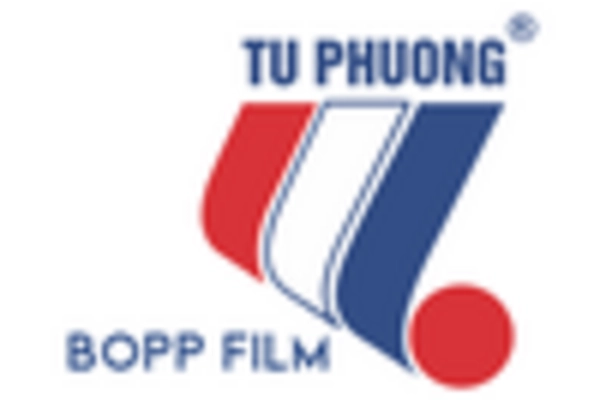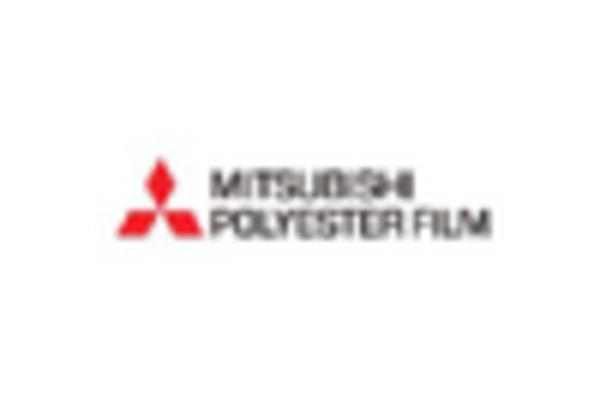Growth in E-Commerce and Retail Sectors
The rapid expansion of e-commerce and retail sectors is significantly influencing the Bopp Films For Packaging Market. With the rise of online shopping, there is a heightened need for durable and protective packaging solutions to ensure product safety during transit. Bopp films, with their excellent barrier properties and strength, are well-suited for this purpose. Market analysis indicates that the e-commerce packaging segment is expected to witness a growth rate of around 10% annually, thereby driving the demand for Bopp films. This growth trajectory suggests that companies involved in e-commerce are likely to increasingly rely on Bopp films to enhance their packaging strategies.
Rising Demand for Eco-Friendly Packaging
The increasing consumer awareness regarding environmental sustainability appears to be a pivotal driver for the Bopp Films For Packaging Market. As businesses strive to reduce their carbon footprint, the demand for eco-friendly packaging solutions has surged. Bopp films, known for their recyclability and lower environmental impact, are becoming a preferred choice among manufacturers. Recent data indicates that the market for sustainable packaging is projected to grow at a compound annual growth rate of approximately 7% over the next five years. This trend suggests that companies adopting Bopp films may gain a competitive edge, as consumers increasingly favor brands that prioritize sustainability in their packaging choices.
Consumer Preference for Aesthetic Packaging
The growing consumer preference for visually appealing packaging is likely to drive the Bopp Films For Packaging Market. As brands seek to differentiate themselves in a crowded marketplace, the aesthetic quality of packaging has become increasingly important. Bopp films offer excellent printability and clarity, allowing brands to create attractive packaging designs that capture consumer attention. Recent studies suggest that products with appealing packaging can increase sales by up to 30%. This trend indicates that companies investing in Bopp films for their packaging solutions may experience enhanced brand loyalty and customer engagement, ultimately contributing to market growth.
Regulatory Support for Sustainable Practices
Regulatory frameworks promoting sustainable packaging practices are becoming a significant driver for the Bopp Films For Packaging Market. Governments worldwide are implementing stricter regulations aimed at reducing plastic waste and encouraging the use of recyclable materials. Bopp films, being recyclable and less harmful to the environment, align well with these regulatory trends. As companies strive to comply with these regulations, the demand for Bopp films is expected to rise. Market forecasts suggest that the regulatory push for sustainable packaging could lead to a substantial increase in the adoption of Bopp films, thereby enhancing their market presence.
Technological Innovations in Film Production
Technological advancements in the production of Bopp films are emerging as a crucial driver for the Bopp Films For Packaging Market. Innovations such as improved extrusion techniques and enhanced coating processes are leading to the development of films with superior properties, including better clarity, strength, and barrier performance. These advancements not only improve the functionality of Bopp films but also expand their application range across various sectors, including food, pharmaceuticals, and consumer goods. The market for advanced packaging solutions is anticipated to grow, with Bopp films playing a central role due to their enhanced characteristics, which could potentially lead to increased market share.


















Leave a Comment